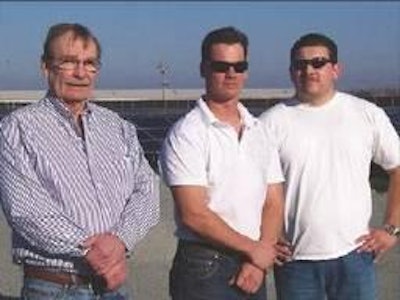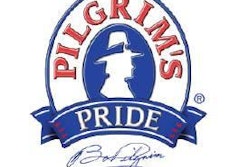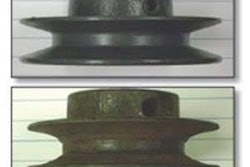
Managing nutrients wisely and protecting nearby watersheds from runoff and erosion are standard operating procedures for the growers who were selected as Family Farm Environmental Excellence Award winners by the U.S. Poultry & Egg Association this year. Broiler, turkey and pullet growers from six regions of the country were recognized for their outstanding environmental stewardship. Each farm provides an example of how poultry growers can be leaders in environmental protection in their communities. These growers give a face to the industry so that neighbors, legislators and regulators can learn how the family farm is a vital part of the modern poultry industry and how farmers are still, first and foremost, environmentalists.
Nilsen Farms: Innovating with solar power
The location of California's San Joaquin Valley, sandwiched between the California Coastal Range to the west and the Sierra Nevada to the east, leads to long, hot and dry summers. Days of seemingly endless sunshine frequently lead to summertime temperatures over 100 degrees Fahrenheit in Wilton, California, home of Nilsen Farms. Second generation turkey growers Tim Nilsen and Ben Gutierrez took over management of Nilsen Farrms' three turkey growing locations in 2002. Norm Nilsen, Tim's father, and Jesus Gutierrez, Ben's father, worked together on poultry operations in both Southern and Northern California over a number of years. The younger generation decided that the same solar energy that caused all of that heat could also help provide the remedy for that heat.
Nilsen and Gutierrez converted the finishing houses, which are used to raise 100,000 toms per flock on contract with Foster Farms, to tunnel ventilation. Evaporative cooling coupled with tunnel ventilation transforms the hot, dry air of the high dessert into a comfortable, cool breeze for the heavy toms inside the houses. This ventilation system has been so effective and led to such good bird performance that Nilsen Farms was named Foster Farms' turkey grower of the year three years in a row.
One downside of tunnel ventilation is the cost of the electric power that it takes to operate the tunnel fans, particularly when your total operation has 26 turkey houses with 650,000 square feet under one roof. Nilsen Farms has harnessed the power of the sun on two of its farms to generate electricity, power the tunnel fans and keep the birds comfortable.
At one farm, seven acres of land in front of the turkey house has been converted into the Sacramento Metropolitan Utility District's first photovoltaic solar farm. The solar farm can generate up to 1 million watts of power. Tim Nilsen orchestrated a collaborative deal between his farm, SMUD and EnXco Development Corp., a private renewable energy producer. Energy from this solar farm is sold by SMUD to utility customers who volunteer to pay a premium for "green" power.
At another Nilsen Farms location, a solar system is in place to power the electrical needs of the farm. Tunnel ventilated poultry houses have peak electrical demand in the heat of the day, at the same time that most utilities are at peak load because of demand from residential and commercial air-conditioners. Photovoltaic solar panels only produce power when the sun is out, and they have peak production when there is full sun, which just happens to coincide with peak electrical demand in the summertime. When the farm doesn't need all of the power produced by the solar panels, the power is sold back to the grid. Tim Nilsen said that his goal is to have solar power provide all of the electricity for his farms.
Nilsen Farms also operates a composting business to value-add its litter prior to sale. The finisher houses are completely cleaned out once a year during the dry season and the litter is trucked to the Nilsen family's composting facility. The litter is screened prior to being placed in windrows on level packed pads. Water is added to get the composting process started. Any runoff is directed to a retention pond and the water from the pond can be reused on the compost piles as needed. Temperature and moisture level data are kept and the finished product is tested for pathogens and heavy metal content. The compost is sold to organic farmers and major bagging companies for retail distribution.
Nilsen Farms was selected as the winner in the west region.
Crouch Farms: Cowboys, covered wagons and camp
"Farmers have the oft-underappreciated blessing of being the ones who live on and with the land," said Jim Crouch. "As the ones who make our living from the land it is not only our responsibility but our duty to be caretakers. With the best of our abilities, not only for ourselves today but for generations in the future, we must continue to be the best and staunchest environmental advocates; and tell the world who we are." Crouch and his wife Mattie, in addition to being good environmental stewards, have come up with some unusual ways to help educate children and adults about agriculture.
Besides being a good grower for O.K. Farms, Jim is a "cowboy poet," and he recites his poetry at performances from Missouri to Wyoming. Jim's knack for showmanship has been put to use educating the community about farming and its role in society.
"Both Mattie and I seem to have a special affinity and an unusual opportunity to serve and make a difference in people's lives," Jim said. When asked by a teacher friend if his fifth grade class could take a field trip to visit the Crouch's farm several years ago, Jim said yes. This field trip became the first of what Jim and Mattie now call "cowboy camps." The family hosts the cowboy camps on their farm each year to teach schoolchildren about Oklahoma heritage and the importance of agriculture for providing the food and fiber that we need each day. They hold these camps on their Howe, Oklahoma, broiler farm a few times each year. Each year an average of 350 to 400 students participate in the camps which feature the Crouch's poultry, cattle and hay-making operations. The highlights of the camps are the Crouch's draft horses and Conestoga-style wagons which the couple built.
The draft horses pull the wagons that are used in the camp and also appear in parades, trail rides, wagon treks and other public events. One of the Crouch's wagons is used for giving rides, another is a chuck wagon for preparing meals. They also have a wagon with operating restrooms called the Oklahoma Sunshine.
"We take the opportunity to expose these kids, teachers and parents to the rural way of life. They learn about farmers and ranchers and the importance of agriculture in producing food that each and every one of us enjoys," he said. Mattie and Jim, along with volunteer friends, use a series of games and demonstrations to make sure that the campers learn and have fun at the same time.
Crouch Farms was selected as the winner in the south central region.
Boeckman Farm: Preventing erosion
Neil and Gina Boeckman raise turkeys, hogs and row crops on their farm in Celina, Ohio. The Boeckmans raise 5,500 toms per flock on contract with Cooper Farms. Litter from their turkey house and the manure from the hog lagoon are used to fertilize the farm's 400 acres of corn and soybean fields.
Neil has been proactive in nutrient planning on the farm and has initiated several projects to control runoff and erosion. The farm has waterways and filter strips to keep fertilizers out of streams and to prevent erosion. Extensive soil testing is done and annual groundwater analysis is performed to ensure that soil nutrients are applied only as needed and that they are not wasted.
"Public perception can be a far cry from reality, at least where the turkey industry's commitment to environmental stewardship is concerned," Neil said. "One sloppy operator can give the entire industry a black eye. The industry's good reputation can be brought down almost overnight, but can take years to rebuild. That's why we must be constantly vigilant in the way we manage manure and mortality, in the way we communicate and interact with neighbors and in the technical skills and capabilities we acquire, so that we preserve our land for the next generation."
The Neil and Gina Boeckman Turkey and Swine Farm was selected as the winner in the northeast region.
Terrace Farms: Pullets and pasture
Jim and Linda Davis are the third generation of the family to operate Terrace Farms. The Lexington, North Carolina, farm has been in the family for almost 100 years. Operated initially as a dairy farm, Jim built his first pullet houses on contract with Pilgrim's Pride in 2002, years after the dairy was closed. Jim and Linda now have four pullet houses, which can each hold 13,000 birds per flock.
In addition to the pullets, Terrace Farms has around 50 head of cattle, some Boer goats and donkeys on its 114 acres.
The pullet houses are cleaned out every 46 to 48 weeks and more than half of the litter is used on the farm's pastures and hay fields as fertilizer. The farm has a phosphorous-based nutrient management plan and the litter not needed for the farm's fieldbased on soil testsis sold to other farmers. Jim estimates that the litter produced in the pullet houses saves the farm $10,000 to $12,000 in commercial fertilizer expenses and the litter that he sells nets $3,000 to $6,000 per year.
The cattle operation is managed principally via rotational grazing, and the pasture is divided into 17 paddocks or grazing cells. All the streams and two ponds are fenced off from the livestock. The livestock are watered solely from wells, county water or water piped from the pond.
Terrace Farms was named the winner in the southeast region.
Middon Manor Farm: Protecting water quality
William and Jackie Woolf raise 62,000 broilers per flock on contract with George's Foods Inc. on Middon Manor Farm just outside of Weyers Cave, Virginia. In addition to the chickens, the Woolfs raise cattle and hay. The farm has 100 acres and has been in the family for over 200 years.
Both Naked Creek and Dices Spring Creek flow through the farm. Dices Spring Creek is the sole water source for the town of Weyers Cave. Woolf is participating in the Conservation Reserve Enhancement Program and has set aside 29 acres of the farm that border these two streams to help prevent stream bank erosion, provide wildlife habitat and protect water quality. The set aside land includes one mile along Naked Creek and 0.3 mile along Dices Spring Creek.
The CREP project involved planting about 3,000 trees. William also planted 800 additional trees to serve as a buffer along other property lines. Because of the reduction in the land available for grazing, the farms' cattle herd was dropped from 70 to 20 head.
William has worked with researchers and extension agents on several projects on his property. These projects have ranged from how best to manage tree plantings for tree livability and wildlife habitat to studies of stream health and American eel migration at Naked Creek.
Middon Manor Farm was named the winner in the Mid-Atlantic region.
Robertson Farms: Careful nutrient management
Glenn Robertson and his son Ryan raise turkeys, cattle and hay on the family's farm in Loose Creek, Missouri. The farm's 20,800 turkeys per flock are raised on contract with Cargill Value Added Meats. Two hundred and fifty acres on the farm are supplemented with some rented acres to graze the cattle herd. Good litter management inside the turkey house is an important part of the growing program for the Robertsons. Glenn and Ryan use a litter machine in the finishing houses weekly until two weeks prior to slaughter to remove caked litter. They also remove caked litter in the brooder house each week with a pitch fork. All of the farm's turkey mortalities are composted on the farm. Litter is mixed with the mortalities and each pile is composted two times.
Robertson Turkey Farms employs a phosphorous-based nutrient management plan. Only 10% of the farm's litter is currently being used on the farm, so legumes are used in the hay fields to fix nitrogen and improve yields. The ponds are fenced to keep cattle out and prevent bank erosion. Cross fencing has been installed in the pastures to allow for rotational grazing.
Robertson Turkey farm was selected as the winner in the south central region.

















